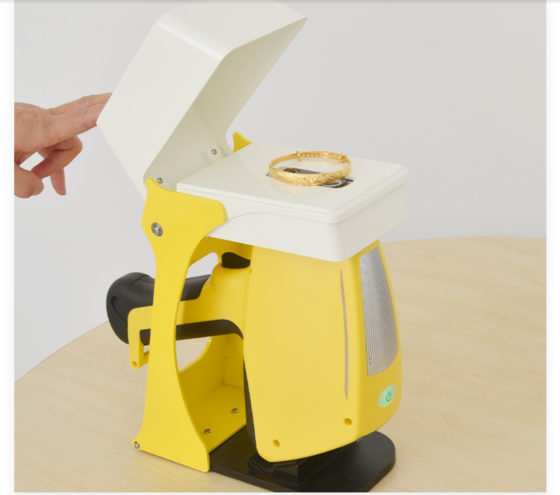Por que o analisador portátil de XRF é mais caro do que o analisador de XRF de mesa, apesar de ter a mesma configuração?

In the world of XRF (Fluorescência de raios X) technology, both portable and desktop analyzers play a crucial role in testing the elemental composition of materials, especially in industries like precious metals, mineração, and manufacturing. Contudo, a common question arises when comparing these two types of analyzers: why is the portable XRF analyzer often more expensive than the desktop model, even when they share the same configuration and features?
Let’s explore the factors behind this price difference and understand what sets portable XRF analyzers apart.
1. Engineering and Miniaturization
One of the primary reasons for the higher cost of portable XRF analyzers lies in the engineering required to miniaturize the components. While a desktop XRF analyzer has ample space for its parts—such as the X-ray tube, detector, cooling systems, and electronics—portable models must house the same components in a much smaller package.
This requires advanced design techniques and precision engineering to ensure the device remains lightweight, durable, and easy to handle while maintaining high accuracy. Achieving the same level of performance in a smaller device with fewer cooling resources and protective structures demands additional R&D investment, which is reflected in the cost.
2. Battery Power and Portability Features
Unlike desktop XRF analyzers, which rely on stable power supplies, portable analyzers are equipped with rechargeable batteries that need to provide sufficient power for extended fieldwork without compromising performance. The incorporation of high-capacity batteries, energy-efficient circuitry, and specialized software to optimize battery life adds to the cost of portable models.
In addition, portable devices often come with extra features like ergonomic design, rugged casing for outdoor use, water and dust resistance, and drop protection. These features are essential for making the analyzer field-ready but also increase the manufacturing costs.
3. Ruggedness and Durability
Portable XRF analyzers are built to withstand harsher environments than their desktop counterparts. Whether they are used in mining sites, construction zones, or other demanding industrial environments, these analyzers must endure rough handling, temperature fluctuations, moisture, and even accidental drops.
To ensure they remain functional in these challenging conditions, manufacturers use materials and technologies that provide extra durability, such as impact-resistant casings and reinforced internal components. This added ruggedness comes with an increased production cost, contributing to the higher price of portable models.
4. Versatility and Convenience
Portable XRF analyzers are designed for versatility and convenience, allowing users to conduct tests in various locations without needing to return to a lab or testing facility. This level of flexibility can be invaluable for professionals who need real-time analysis on-site, such as in the jewelry industry, mining operations, or environmental testing.
The ability to perform quick, accurate tests anywhere—whether in remote locations or on a factory floor—justifies the higher price, as this capability saves time and money in the long run.
5. Advanced Connectivity and Data Management
Portable XRF analyzers often feature advanced connectivity options, such as Bluetooth, Wi-Fi, or cloud integration, allowing users to transmit data remotely. This is particularly useful in fieldwork, where data sharing with colleagues or off-site labs is necessary.
These connectivity features require additional software and hardware integration, which adds to the device’s overall cost. In contrast, desktop models often rely on simpler data management systems because they are typically used in more controlled environments where immediate data sharing is less critical.
6. Higher Manufacturing Costs
The manufacturing of portable devices is often more complex than desktop devices due to the need for miniaturization, durability, and portability. The smaller the device, the more challenging it is to manufacture its components to maintain performance while reducing size. This precision in manufacturing leads to higher production costs, which are ultimately passed on to the consumer.
Conclusão
While portable and desktop XRF analyzers may share the same core configuration in terms of technical specifications, the additional engineering, portability, durability, and features of the portable model justify its higher price. For users who need flexibility, ruggedness, and the ability to analyze materials on the go, the extra investment in a portable XRF analyzer can provide significant benefits and long-term value.
In industries where rapid, accurate results are essential, the convenience of a portable XRF analyzer is often worth the additional cost.
 VRAY Instrumento Limitada
VRAY Instrumento Limitada

